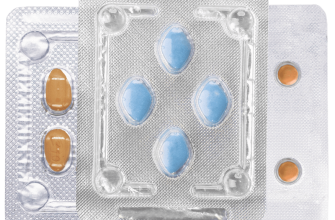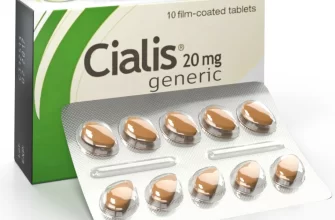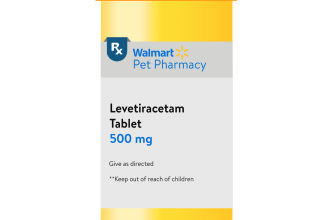Need help deciding between Cialis and finasteride? Cialis primarily treats erectile dysfunction and benign prostatic hyperplasia (BPH) symptoms by increasing blood flow. Finasteride, on the other hand, shrinks the prostate gland by reducing dihydrotestosterone (DHT) levels, specifically targeting BPH symptoms.
Consider your primary concern: If erectile dysfunction is your main issue, Cialis is the likely choice. If you predominantly experience urinary problems associated with an enlarged prostate, finasteride might offer better relief. However, both medications can sometimes be prescribed together for men experiencing both conditions.
Important Note: Both drugs have potential side effects. Cialis can cause headaches, back pain, and muscle aches. Finasteride, in rare cases, can lead to decreased libido or sexual dysfunction. A thorough discussion with your doctor is absolutely necessary before starting either medication. They will assess your individual health profile to determine the safest and most effective treatment plan for you.
- Cialis vs Finasteride: A Detailed Comparison
- Cialis: Key Features
- Finasteride: Key Features
- Treating Erectile Dysfunction: Cialis’s Role and Side Effects
- How Cialis Works
- Potential Side Effects
- Serious Side Effects
- Interactions and Precautions
- Summary of Side Effects
- Important Note:
- Managing Benign Prostatic Hyperplasia (BPH): Finasteride’s Effectiveness and Precautions
- Cialis and Finasteride Combined: Potential Interactions and Considerations
- Possible Side Effects
- Recommendations for Safe Use
Cialis vs Finasteride: A Detailed Comparison
Choose Cialis if you need help with erectile dysfunction (ED). This medication improves blood flow to the penis, enabling stronger and more sustained erections. It’s a short-acting treatment, meaning its effects are temporary. Dosage varies; consult your doctor for personalized guidance.
Cialis: Key Features
Mechanism of Action: Increases blood flow to the penis. Duration of Effect: Up to 36 hours (depending on dosage and individual response). Primary Use: ED treatment. Side Effects: Headache, flushing, nasal congestion, back pain; less commonly, more serious side effects are possible. Always discuss potential side effects with your doctor.
Select finasteride for managing hair loss (androgenetic alopecia) or benign prostatic hyperplasia (BPH). Finasteride lowers levels of dihydrotestosterone (DHT), a hormone contributing to both conditions. It’s a longer-term treatment, requiring consistent use to maintain results. Hair regrowth may take several months.
Finasteride: Key Features
Mechanism of Action: Reduces DHT levels. Duration of Effect: Continuous use is needed for ongoing benefit. Hair regrowth takes time. Primary Use: Hair loss and BPH treatment. Side Effects: Decreased libido, erectile dysfunction, and gynecomastia (breast enlargement) are possible, though relatively uncommon. Talk to your doctor about these potential risks.
Remember: These medications address different health concerns. Cialis treats ED, while finasteride treats hair loss and BPH. Never self-medicate; always consult a medical professional for diagnosis and personalized treatment plans. They can assess your individual needs and determine which medication, if either, is right for you.
Treating Erectile Dysfunction: Cialis’s Role and Side Effects
Cialis (tadalafil) treats erectile dysfunction (ED) by increasing blood flow to the penis, facilitating an erection. It’s a PDE5 inhibitor, meaning it blocks an enzyme that prevents blood vessel relaxation.
How Cialis Works
Unlike some ED medications that act quickly, Cialis’s effects can last up to 36 hours. This allows for more spontaneous intimacy, rather than needing to plan around a specific timeframe. The dosage is typically 10mg, though your doctor might adjust it based on individual needs and responses.
Potential Side Effects
While generally well-tolerated, Cialis can cause side effects. These are usually mild and temporary, but it’s crucial to be aware of them. Common side effects include headache, flushing, nasal congestion, and indigestion. More rarely, individuals experience back pain or muscle aches.
Serious Side Effects
In rare instances, more serious side effects occur. These include sudden vision loss, hearing loss, prolonged erection (priapism), and heart problems. Seek immediate medical attention if you experience any of these.
Interactions and Precautions
Cialis can interact with other medications, particularly nitrates used to treat chest pain. It’s vital to inform your doctor of all medications you are taking, including over-the-counter drugs and supplements. Men with certain heart conditions or low blood pressure should discuss the risks with their physician before starting Cialis.
Summary of Side Effects
| Common Side Effects | Less Common Side Effects | Serious Side Effects (Seek Immediate Medical Attention) |
|---|---|---|
| Headache | Back pain | Sudden vision loss |
| Flushing | Muscle aches | Sudden hearing loss |
| Nasal congestion | Dizziness | Prolonged erection (priapism) |
| Indigestion | Nausea | Chest pain |
Important Note:
This information is for educational purposes only and does not substitute professional medical advice. Always consult your doctor before starting any new medication, including Cialis, to determine its suitability for you and to discuss potential risks and benefits.
Managing Benign Prostatic Hyperplasia (BPH): Finasteride’s Effectiveness and Precautions
Finasteride shrinks the prostate gland in many men with BPH, improving urinary symptoms. Studies show a significant reduction in prostate size and improved urinary flow rates.
However, it’s not a cure-all. Expect gradual improvement, not immediate relief. Results vary, and some men experience minimal benefit.
- Symptom Relief: Finasteride primarily targets urinary symptoms like frequent urination, weak stream, and nighttime awakenings. These improvements usually manifest over several months.
- Prostate Size Reduction: The drug’s primary mechanism is reducing prostate size. This reduction, measurable through physical examination or imaging, contributes to symptom relief.
- Surgical Risk Reduction: For some men, finasteride delays or eliminates the need for surgery to treat BPH.
Before starting finasteride, discuss potential side effects with your doctor:
- Sexual Side Effects: Reduced libido, erectile dysfunction, and ejaculation problems are possible, though they often subside after stopping treatment. Frequency varies significantly between individuals.
- Gynecomastia (Breast Enlargement): This is a less common but potential side effect.
- Increased Risk of Certain Cancers: Long-term use may be associated with a slightly increased risk of high-grade prostate cancer. Regular prostate cancer screening remains crucial.
- Regular Monitoring: Your doctor should monitor your prostate-specific antigen (PSA) levels and perform digital rectal examinations periodically to assess your prostate health.
- Open Communication: Report any concerning side effects immediately to your physician. They can adjust your dosage or recommend alternative treatments.
- Lifestyle Changes: Combine finasteride with lifestyle modifications like maintaining a healthy weight and drinking plenty of fluids. These changes may also contribute to BPH management.
Remember, finasteride is most effective when used as directed by your doctor. It’s a part of a broader approach to managing BPH that may also include other medications or lifestyle adjustments.
Cialis and Finasteride Combined: Potential Interactions and Considerations
Avoid combining Cialis and finasteride without direct medical supervision. Both medications affect blood pressure; finasteride can lower blood pressure, while Cialis can, in some cases, lower it further. This combination might lead to orthostatic hypotension (a sudden drop in blood pressure upon standing), causing dizziness or fainting. Monitor your blood pressure regularly if taking both.
Possible Side Effects
While rare, some men report increased side effects like erectile dysfunction or decreased libido when using these medications concurrently. The risk isn’t fully understood, and the probability depends on individual factors. Open communication with your doctor about any changes in sexual function is crucial. They can help assess the situation and adjust treatment as needed.
Recommendations for Safe Use
Always inform your doctor about all medications you are taking, including over-the-counter drugs and supplements, before starting any new treatment. This allows your doctor to assess potential drug interactions and create a safe treatment plan. Regular check-ups are recommended to monitor for any adverse effects.







